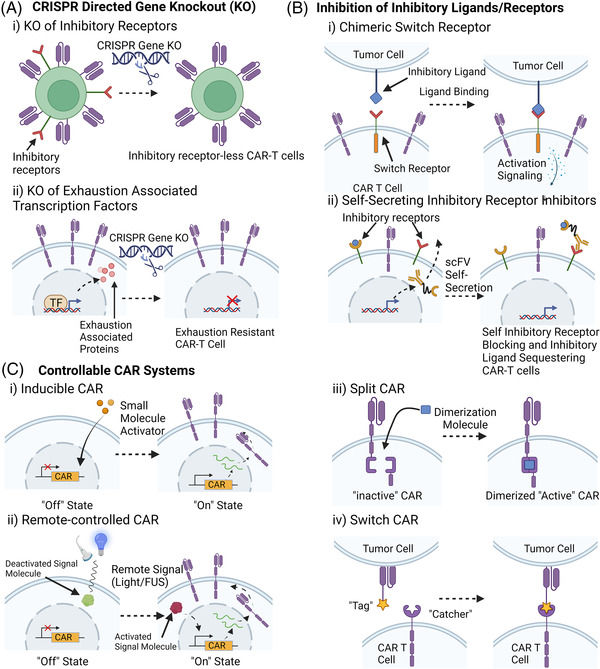FIGURE 3.

Examples of different strategies to mitigate chimeric antigen receptor (CAR) T cell exhaustion. (A) CRISPR‐cas9 gene knockout strategies to engineer exhaustion‐resistant CAR T cells. (i) Knockout of inhibitory receptors such as PD‐1, CTLA‐4, TIM‐3, LAG‐3, TIGIT and TGF‐β receptors. (ii) Knockout of exhaustion‐associated transcription factors such as SOX4, ID3 and NR4A family factors. (B) Inhibition of inhibitory receptors on CAR T cells. (i) Chimeric Switch receptors such as PD1CD28 or PDmut7R convert inhibitory ligand binding into activation signalling. (ii) CAR T‐cell self‐secretion of anti‐inhibitory receptor scFVs and/or inhibitory ligand sequestering molecules. (C) Examples of Controllable CAR Systems. (i) Inducible CAR system where CAR expression is induced by the presence of small molecular activators such as Doxycycline. (ii) Light or Focused Ultrasound (FUS) activated CAR expression (iii) Split CAR system where the CAR molecule is split into two distinct portions such that the CAR will only be functional in the presence of a dimerization molecule. (iv) Switch CAR system where the scFV contains a “tag” domain while the signalling domain contains a “catcher”. The “Tag” and “Catcher” can bind to each other to produce a functional CAR molecule
